- Home
- P. D. James
The Maul and the Pear Tree Page 2
The Maul and the Pear Tree Read online
Page 2
Marr evidently emerged from his encounters with these ruffians of the Merchant Navy as a well-disciplined man. In the few months since he had been in business he had already gained a reputation for industry and honesty. Trade was brisk, and for the past few weeks he had been employing a carpenter, Mr Pugh, to modernise the shop and improve its layout. The whole of the shop front had been taken down and the brickwork altered to enlarge the window for a better display of goods. And on 29 August 1811, a son had been born to increase his joy and fortify his ambition. He could look forward to the day when his shop front – perhaps the front of many shops, stretching from Bethnal Green through Hackney, Dalston, the Balls Pond Road to Stamford Hill and beyond – would bear the inscription ‘Marr and Son’.
The first shop, though, was a very modest start. It was one of a terrace of mean houses fronting on to Ratcliffe Highway. The shop, with its counter and shelves, took up most of the ground floor. Behind the counter a door led into a back hall from which ran two flights of stairs – downwards to the kitchen, in the basement, and upwards to a first-floor landing and two bedrooms. A second floor served as a warehouse to store silk, lace, pelisse, mantles and furs. It was a plain house, saved from drabness by the fine new bay window, freshly painted in olive green. The terrace in which the shop stood was one of four similar terraces that formed the sides of a square. Within the block each house had its own fenced-in back yard, accessible by a back door in the hall. The ground inside the square was common to the inhabitants of the whole block. The terrace on the side of the square opposite to Marr’s shop faced Pennington Street, and here the houses were overshadowed by a huge brick wall, twenty feet high. This was the wall of the London Dock, built six years earlier, and designed like a fortress by the architect of Dartmoor Prison to protect the hundreds of vessels moored inside. To build the dock eleven acres of shacks and hovels had been levelled and their inhabitants crammed into the slums alongside. Most of them were cut off from the only living they knew, since the ships they had once plundered were now protected by the monstrous black wall of the dock. Baulked of this easy living they preyed on the inhabitants of the riverside parishes, and added to London’s growing army of thieves and beggars. The wall that made London’s shipping more secure did nothing to increase the safety of Ratcliffe Highway.
And it was a bad time, as well as an unsavoury district, in which to set up shop. In 1811 Napoleon’s blockade of the continental ports had almost halted European trade. In the industrial midlands the activities of machine-breakers fed fears of revolution. The harvest had been a disaster; and, appropriately for a year of violence and confusion, it was in 1811 that the old king was finally pronounced by his doctors to be irrevocably mad, and the Prince of Wales became Regent.
Now though, as he tidied his shop at the end of a busy week, Marr’s mind would be occupied with more personal worries: the health of his wife, who was recovering only slowly from her confinement; the wisdom of the alteration of the shop – had he perhaps overreached himself? the irritating matter of a lost ripping chisel which Pugh, the carpenter, had been loaned by a neighbour and now insisted was still in Marr’s shop – but which a thorough search had failed to recover; his own hunger at the end of a long day. The draper paused in his work and called to the servant girl, Margaret Jewell. Late though it then was (about ten minutes to midnight, as Margaret Jewell afterwards told the Coroner) he gave the girl a pound note and sent her out to pay the baker’s bill and to buy some oysters. At a penny a dozen, supplied fresh from the oyster boats from Whitstable, they would be a cheap, tasty supper after a long day. And they would be a welcome surprise for Marr’s young wife, Celia, who was then in the basement kitchen, feeding her baby. Timothy Marr junior was three and a half months old.
As she closed the shop door and went out into the night Margaret Jewell saw her master still at work, busy behind the counter with James Gowen. The girl turned left into Ratcliffe Highway.
Here, it seems, she was unafraid to walk alone at night; but this sense of security, about to be shattered for a generation, was comparatively new. The parish vestries of a few Queen Anne churches had brought the first civilising influences – paving stones, oil lamps and parish watchmen – but the principal changes had come about in Margaret Jewell’s own lifetime. People never wearied of recalling the fire of 1794, the most destructive since the fire of London, when the flames had consumed hundreds of wooden houses and shacks on both sides of the Highway. A kettle of pitch boiled over in a boat-builder’s yard, and the fire spread to a barge loaded with saltpetre. The tide was out, and neighbouring vessels lay helpless in the mud. The barge blew up and ignited the saltpetre warehouses of the East India Company. Fire rained on Ratcliffe Highway, as it was to do again 150 years later. But it was a cleansing fire. The wooden shacks were replaced by little brick houses, of which Marr’s shop was one, and pockets of respectability grew up. The opening of the London Dock in 1805 brought others, as wealthy merchants moved into the parish, evincing their quality every Sunday with a line of carriages drawn up outside the church gates of St George’s-in-the-East. On a wild winter night the Highway could still be a fearful place for the superstitious, when the bowsprits and booms juddered and creaked against the quays of the London Dock and the wind moaned through old rigging like the last sigh of a pirate swinging by the river. But most nights were now peaceful, and by day the Highway had become a cheery, vulgar, boisterous street, brilliant with the colours of scores of painted signs hanging outside inns and shops, and permeated everywhere by enticing smells of the sea and river: of fish, tarred twine, new ropes and sails, resinous timbers for ships’ spars. And on a Saturday night, especially, when men were paid their week’s wages in the public houses and the shops stayed open late, the Highway had a glittering life of its own, sustained by the comparatively new sense of security that enabled a servant girl to walk out safely alone at midnight.
Margaret Jewell made her way along Ratcliffe Highway to Taylor’s oyster shop, but she found it shut. She retraced her steps to Marr’s house, glanced through the window, and saw her master still at work behind the counter. It was the last time she saw him alive. The time would then be about midnight. It was a mild, cloudy night, following a wet day, and the girl may have been glad of an excuse to stay out longer. She continued past Marr’s shop and turned off the Highway down John’s Hill to pay the baker’s bill.
And now she was turning her back on safety. Round the corner from John’s Hill ran Old Gravel Lane, the historic land link with Wapping shore, winding down to the river seventy yards east of Execution Dock, where the pirates swung. Between the wharves the water heaved under a scum of sludge and sewage; behind them the tides of centuries had washed up deposits of old decaying hovels like barnacles on a ship’s hulk. They conformed to no plan. The old custom had been to build in courts and alleys at right angles to the roads. Courts were built within courts, alleys behind alleys. And more recently the girl had seen whole areas walled in, dwarfed and darkened even in daylight by the eyeless walls of warehouses, the bleak soaring walls of sailors’ tenements, and the cliff of the London Dock, sheltering its alien floating city. She would have heard chilling tales of life in the dark labyrinths taken over by squatters, men and women crammed into derelict property that offered a perpetual fire risk to the dens and warrens where Old Gravel Lane twisted down to the Thames – Gun Alley, Dung Wharf, Hangman’s Gains, Pear Tree Alley. The starving people were quiet for the most part, with the sullen fortitude of despair, but to respectable Londoners they constituted a perpetual menace. Occasionally it erupted into reality, when savage mobs surged West to riot and plunder, or roared out for the festival of a public hanging.
‘The baker’s shop was shut,’ Margaret Jewell later told the Coroner. ‘I then went to another place to get the oysters but I found no shop open. I was out about twenty minutes.’ She did not venture down towards riverside Wapping, but returned to the familiar safety of Ratcliffe Highway.
But now it was past midnigh
t, and the street noises were dying down. Public houses were closing, shutters were being fastened, bolts shot. And as the street fell silent Margaret Jewell would begin to hear her own footsteps echoing on the cobblestones. Overhead, the rickety parish lamps of crude fish-blubber oil cast a flickering light on the wet pavement, animating and deepening the shadows; and between the lamps were pools of total darkness. Nor, when Margaret Jewell reached 29 Ratcliffe Highway, was any light shining in Marr’s shop either. It, too, was dark, the door shut tightly against her. The girl stood alone in the silent street and pulled the bell.
Immediately the jangling seemed unnaturally loud to the waiting girl. There was no one about at this late hour, except George Olney, the watchman, who passed by without speaking on the other side of the street, taking a person in charge to the lock-up. Margaret Jewell rang again, more loudly, pressing herself close to the door, listening for any sound from within. She was not yet seriously worried. The master was taking his time. Probably he was with her mistress, in the comfort of the downstairs kitchen. Perhaps the family, despairing of their oysters, had even made their way to bed. The girl hoped that her master would not chide her for taking so long on a fruitless errand; that her ringing wouldn’t waken the child. She pulled again, more vigorously; listened: and this time heard a sound which, to the end of her life, she would never recall without a frisson of horror. For the moment, though, it brought only relief, and the comforting assurance that she would soon gain the warmth of the familiar kitchen. There was a soft tread of footsteps on the stairs. Someone – surely her master? – was coming down to open the door. Then came another familiar sound. The baby gave a single low cry.
But no one came. The footsteps ceased and again there was silence. It was an absolute silence, eerie and frightening. The girl seized the bell and rang again; then, torn between panic and frustration, began to kick the door. She was cold and beginning to be very frightened. As she rang and kicked a man came up to her. His drunken senses irritated by the noise, or imagining the girl was causing a nuisance, he began to abuse her. Margaret Jewell gave up knocking. There was nothing to be done but wait for the next appearance of the watchman. To continue with her useless ringing now would only expose her to fresh insults.
She waited about thirty minutes. Promptly at one o’clock George Olney came calling the hour. Seeing the girl at Marr’s door and not knowing who she was he told her to move on. She explained that she belonged to the house, and thought it very strange that she should be locked out. Olney agreed. He said he had no doubt but that the family were within. He had passed when calling the hour at twelve o’clock, and had himself seen Mr Marr putting up his shutters. A little after midnight he had examined the window, as was his custom, and had noted that the shutters were not fastened. He had called out to Marr at the time, and a strange voice had answered, ‘We know of it’. Now, holding his lantern high against the window, he examined the shutter again. The pin was still unfastened. Seizing the bell he rang vigorously. There was no reply. He rang again, pounded on the knocker, then bent down and called through the keyhole, ‘Mr Marr! Mr Marr!’
The renewed ringing, rising now to a crescendo, roused John Murray, pawnbroker, who lived next door. He was not a man to interfere with his neighbours, but he had been disturbed by Margaret Jewell’s earlier assault on the door. Now, at a quarter past one, he and his wife were ready for bed, and hoping for sleep. There had been mysterious noises earlier in the night. Shortly after twelve o’clock he and his family had been disturbed at their late supper by a heavy sound from next door, as if a chair were being pushed back. It had been followed by the cry of a boy, or of a woman. These noises had made little impression at the time. Probably Marr, irritated and tired at the end of the longest and busiest trading day, was chastising his apprentice or his maid. This was his business. But the continued din was another matter. Murray made his way out into the street.
The situation was rapidly explained in a confused babble from Margaret Jewell of oysters, baker’s bills and baby’s cries, and George Olney’s quieter explanation of the unfastened pin, and the fruitless knocking. John Murray took charge. He told the watchman to continue pulling hard at the bell, and he would go into his back yard and see if he could rouse the family from the back of the house. He did so, calling out ‘Mr Marr’, three or four times. Still there was no answer. Then he saw a light at the back of the house. Returning to the street he told the watchman to ring yet louder, while he tried to get into the house by the back door.
It was easy enough to get over the flimsy fence dividing the two properties, and he was soon in Marr’s back yard. He found the door of the house was open. It was very quiet and very still inside, but there was a faint light from a candle burning on the landing of the first floor. Murray made his way up the stairs and took the candlestick in his hand. He found himself opposite the door of the Marrs’ bedroom. Then, inhibited by delicacy, as habit sometimes does impose itself against all reason, he paused irresolutely at the door and called softly, as if the young people, oblivious of the clamour from the street, were sleeping quietly in each other’s arms. ‘Marr, Marr, your window shutters are not fastened.’
No one answered. Murray, still reluctant to invade the privacy of his neighbour’s bedroom, held the candle high and made his way carefully down the stairs and into the shop.
It was then that he found the first body. The apprentice boy, James Gowen, was lying dead just inside the door which led to the shop and within six feet of the foot of the stairs. The bones of his face had been shattered by blow after blow. His head, from which the blood was still flowing, had been beaten to a pulp, and blood and brains splattered the shop as high as the counter, and even hung, a ghastly excresence, from the low ceiling. Petrified with shock and horror Murray for a moment could neither cry out nor move. The candle shook in his hand, throwing shadows and a soft fitful light over the thing at his feet. Then, with a groan the pawnbroker stumbled towards the door, and found his path blocked by the body of Mrs Marr. She was lying face downwards with her face close against the street door, blood still draining from her battered head.
Somehow Murray got the door opened and gasped out his news incoherently. ‘Murder! Murder! Come and see what murder is here!’ The small crowd outside, swollen now by the arrival of neighbours and a second watchman, pressed into the shop. They stood aghast with horror. Margaret Jewell began to scream. The air was loud with groans and cries. It took only a moment for fresh tragedy to be revealed. Behind the counter, and also face downwards, with his head towards the window, was the body of Timothy Marr. Someone called out ‘The child, where’s the child?’ and there was a rush for the basement. There they found the child, still in its cradle, the side of its mouth laid open with a blow, the left side of the face battered, and the throat slit so that the head was almost severed from the body.
Sickened by the horror and brutality and almost fainting with fright, the little group in the kitchen staggered upstairs. The shop was becoming crowded now and there was light from many candles. Huddled together for protection they looked around the room. There on that part of the counter which was free of Gowen’s blood and brains they saw a carpenter’s ripping chisel. With shaking and reluctant hands they took it up. It was perfectly clean.
1 Every year 13,000 vessels from all parts of the world dropped anchor in the port of London – then the world’s greatest port in the world’s greatest city. Before the London Dock opened in 1805 some 10,000 thieves preyed on the cargoes of thousands of vessels moored in the open river. The losses ran to about £500,000 a year, but such was the astonishing wealth pouring into London that this amounted to less than one per cent of the total value of goods handled.
TWO
Person or Persons Unknown
The sudden springing of watchmen’s rattles spread instant alarm. Bedroom windows flew open and night-capped heads emerged. People hurriedly dressed, and a small crowd gathered outside Marr’s shop. Some had heard Murray’s terrible cry ‘Murder!
’, others flocked by instinct to a scene already half familiar in nightmare. But there was nothing to see; only the half-open door, the unfastened shutters and the white, terrified faces of the few who had seen inside.
Within minutes the news reached the River Thames Police Office at Wapping, where Police Officer Charles Horton was on duty. He raced up Old Gravel Lane, forced his way through the crowd in Ratcliffe Highway and entered Marr’s shop. As the first policeman on the scene it was his duty to search the premises. He was lucky to be on duty that night. Two months afterwards, when the Home Secretary authorised the distribution of reward money, Horton received ten pounds for what he was to find.

 The Skull Beneath the Skin
The Skull Beneath the Skin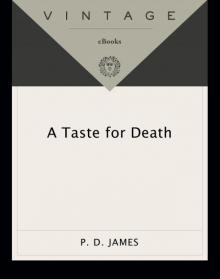 A Taste for Death
A Taste for Death The Children of Men
The Children of Men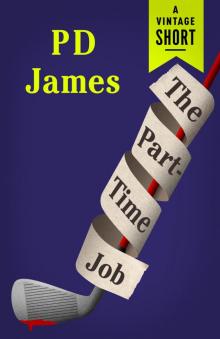 The Part-Time Job
The Part-Time Job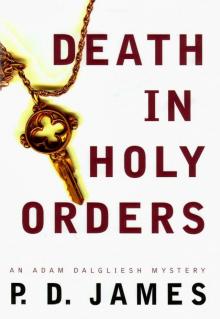 Death in Holy Orders
Death in Holy Orders The Victim
The Victim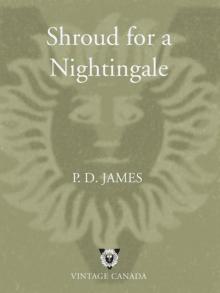 Shroud for a Nightingale
Shroud for a Nightingale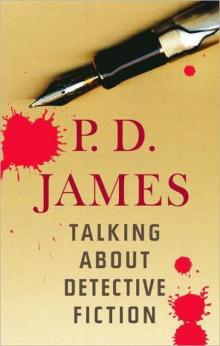 Talking about Detective Fiction
Talking about Detective Fiction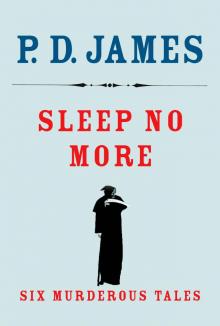 Sleep No More
Sleep No More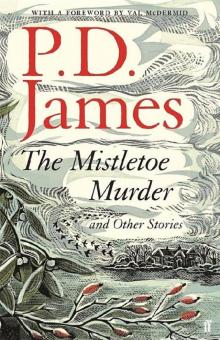 The Mistletoe Murder and Other Stories
The Mistletoe Murder and Other Stories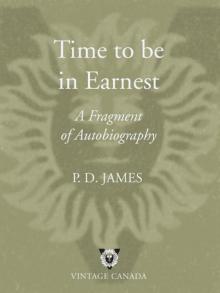 Time to Be in Earnest
Time to Be in Earnest Original Sin
Original Sin A Mind to Murder
A Mind to Murder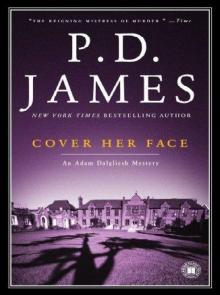 Cover Her Face
Cover Her Face Innocent Blood
Innocent Blood Devices and Desires
Devices and Desires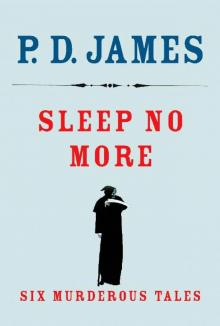 Sleep No More: Six Murderous Tales
Sleep No More: Six Murderous Tales Death Comes to Pemberley
Death Comes to Pemberley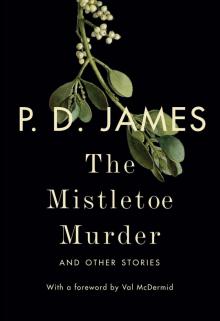 The Mistletoe Murder
The Mistletoe Murder Death of an Expert Witness
Death of an Expert Witness The Private Patient
The Private Patient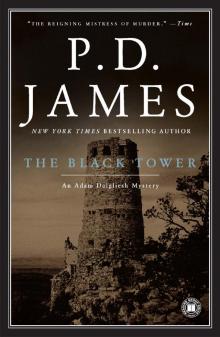 The Black Tower
The Black Tower Devices & Desires - Dalgleish 08
Devices & Desires - Dalgleish 08 Unnatural Causes
Unnatural Causes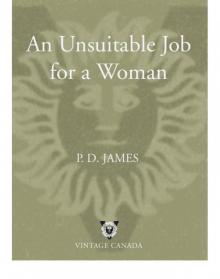 An Unsuitable Job for a Woman
An Unsuitable Job for a Woman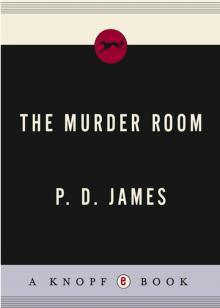 The Murder Room
The Murder Room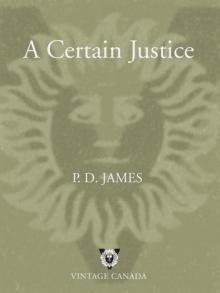 A Certain Justice
A Certain Justice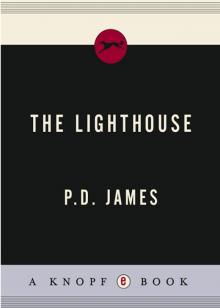 The Lighthouse
The Lighthouse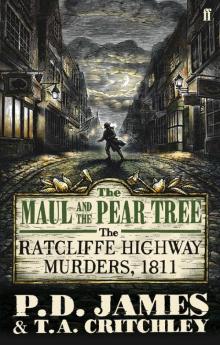 The Maul and the Pear Tree
The Maul and the Pear Tree